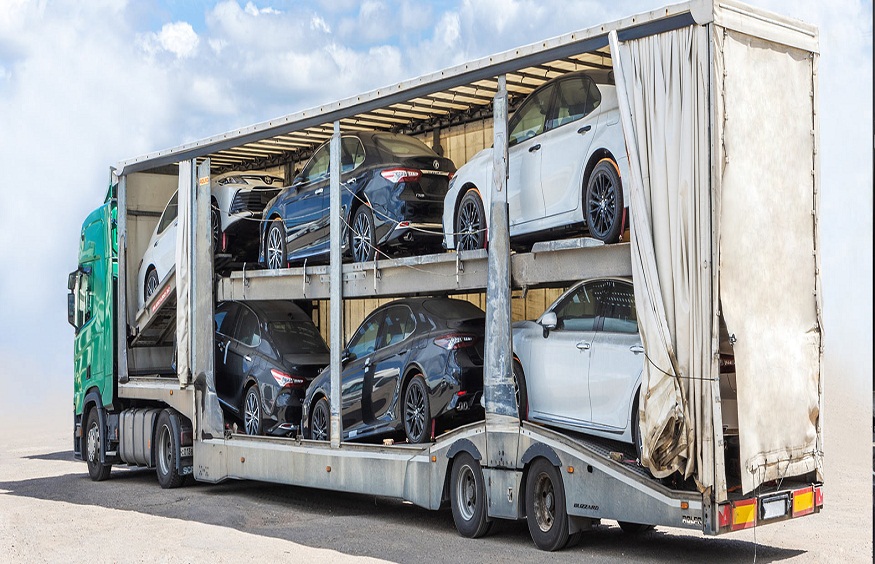When it comes to moving a vehicle from one location to another, choosing the right Car Transport method is crucial. Not only does it affect the safety of your vehicle, but it also has a significant impact on your wallet. This guide will walk you through the various types of auto transport options available and help you identify the most cost-effective solution for your needs.
Types of Auto Transport
Understanding the different car transport methods can help you make an informed decision. Here are the primary types:
1. Open-Air Transport
- Description: Vehicles are loaded onto an open trailer, exposed to the elements.
- Pros:
- Cost-Effective: Generally the cheapest option available.
- Widely Available: Most common method used by transport companies.
- Cons:
- Exposure to Elements: Potential risk from weather and road debris.
2. Enclosed Transport
- Description: Cars are shipped in a closed trailer, protecting them from external conditions.
- Pros:
- Maximum Protection: Ideal for luxury, classic, or high-value vehicles.
- Security: Reduces risk of theft or vandalism.
- Cons:
- Higher Cost: More expensive due to added protection.
- Limited Availability: Fewer enclosed carriers in operation.
3. Door-to-Door Service
- Description: The carrier picks up and delivers the vehicle directly to your specified locations.
- Pros:
- Convenience: No need to travel to terminals.
- Time-Saving: Faster than terminal-to-terminal services.
- Cons:
- Costlier: Additional fees for personalized service.
- Accessibility Issues: Large carriers may have difficulty navigating narrow streets.
4. Terminal-to-Terminal Service
- Description: You drop off and pick up your vehicle at designated terminals.
- Pros:
- Cheaper: Less expensive than door-to-door options.
- Flexible Timing: More leeway in drop-off and pick-up times.
- Cons:
- Inconvenient: Requires you to travel to terminals.
- Potential Storage Fees: Charged if the vehicle isn’t picked up promptly.
5. Flatbed Transport
- Description: Used for short distances or inoperable vehicles, utilizing a flatbed truck.
- Pros:
- Versatility: Can handle oversized or heavy vehicles.
- Accessibility: Useful for areas inaccessible to larger carriers.
- Cons:
- Expensive: Higher cost due to specialized service.
- Limited to Short Distances: Not ideal for long-haul transport.
Which Option is Easier on the Pocket?
For those looking to save money, Open-Air Transport with Terminal-to-Terminal Service is typically the most budget-friendly option.
-
Why Open-Air Transport?
- Lower Operational Costs: Carriers can transport multiple vehicles simultaneously.
- Fuel Efficiency: Less weight per vehicle reduces fuel consumption.
- High Demand: Abundance of open carriers leads to competitive pricing.
-
Why Terminal-to-Terminal Service?
- Reduced Labor Costs: Less time spent on individual pickups and deliveries.
- Efficient Scheduling: Easier for companies to manage routes and timelines.
Tips to Save Even More
- Book in Advance: Last-minute bookings can be more expensive.
- Be Flexible with Dates: Allowing a broader window can secure lower rates.
- Compare Quotes: Get estimates from multiple transport companies.
- Consider Seasonal Demand: Prices can spike during peak moving seasons (summer months).
When to Consider Spending More
While cost is important, there are scenarios where paying extra is beneficial:
- High-Value Vehicles: Enclosed transport protects expensive cars.
- Time Constraints: Door-to-door service saves time if you’re on a tight schedule.
- Special Conditions: Inoperable or oversized vehicles may require flatbed transport.
Making the Right Choice
Assess your priorities:
- Budget: If keeping costs low is paramount, opt for open-air, terminal-to-terminal transport.
- Vehicle Value: For expensive or sentimental vehicles, consider enclosed transport.
- Convenience: If time and ease are more important than cost, door-to-door service is ideal.
Conclusion
Selecting the right car transport method doesn’t have to be overwhelming. By understanding the types of auto transport and evaluating your specific needs, you can find an option that balances both your budget and peace of mind. Remember, the cheapest option isn’t always the best, but with careful consideration, you can make a choice that leaves both you and your wallet satisfied.

